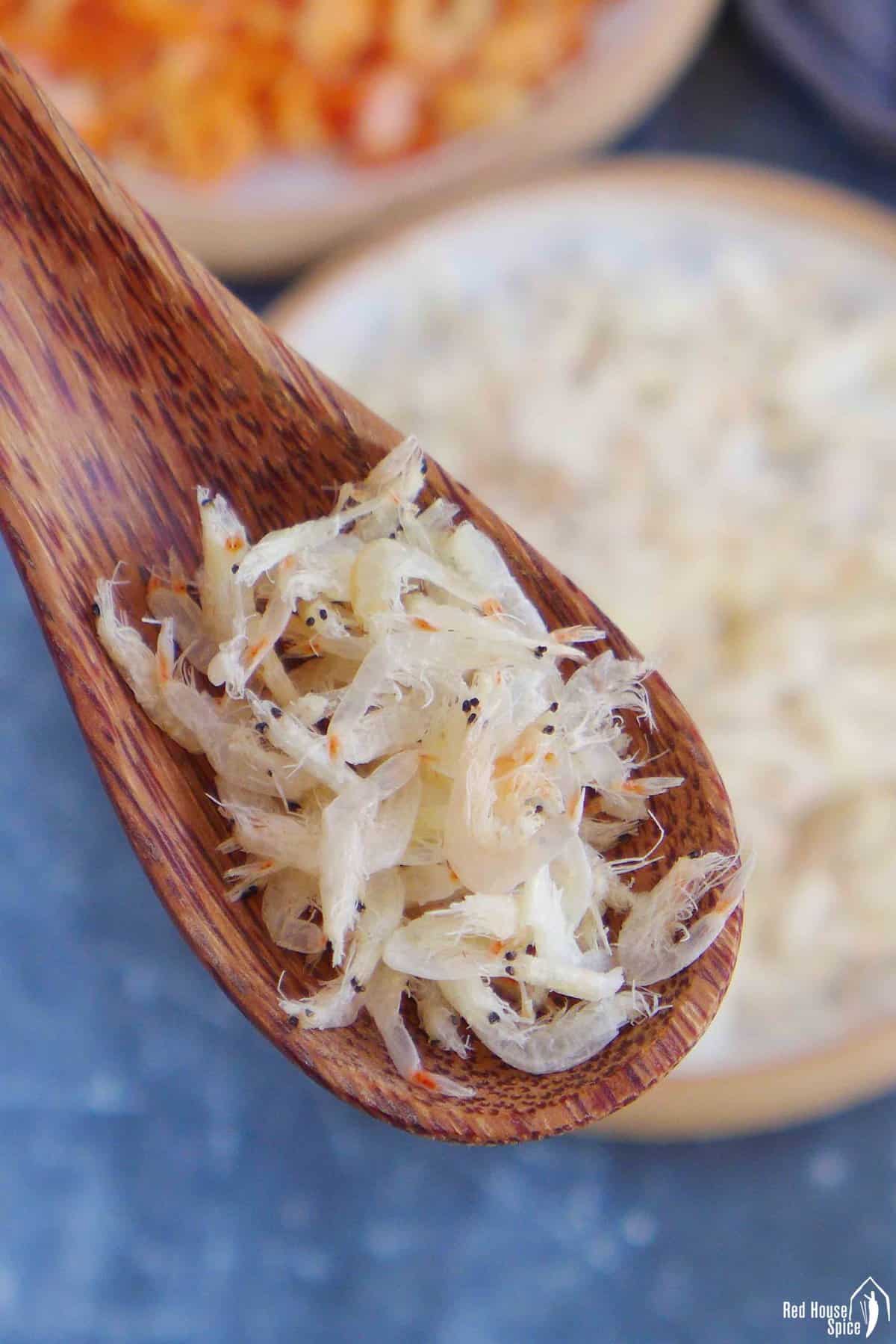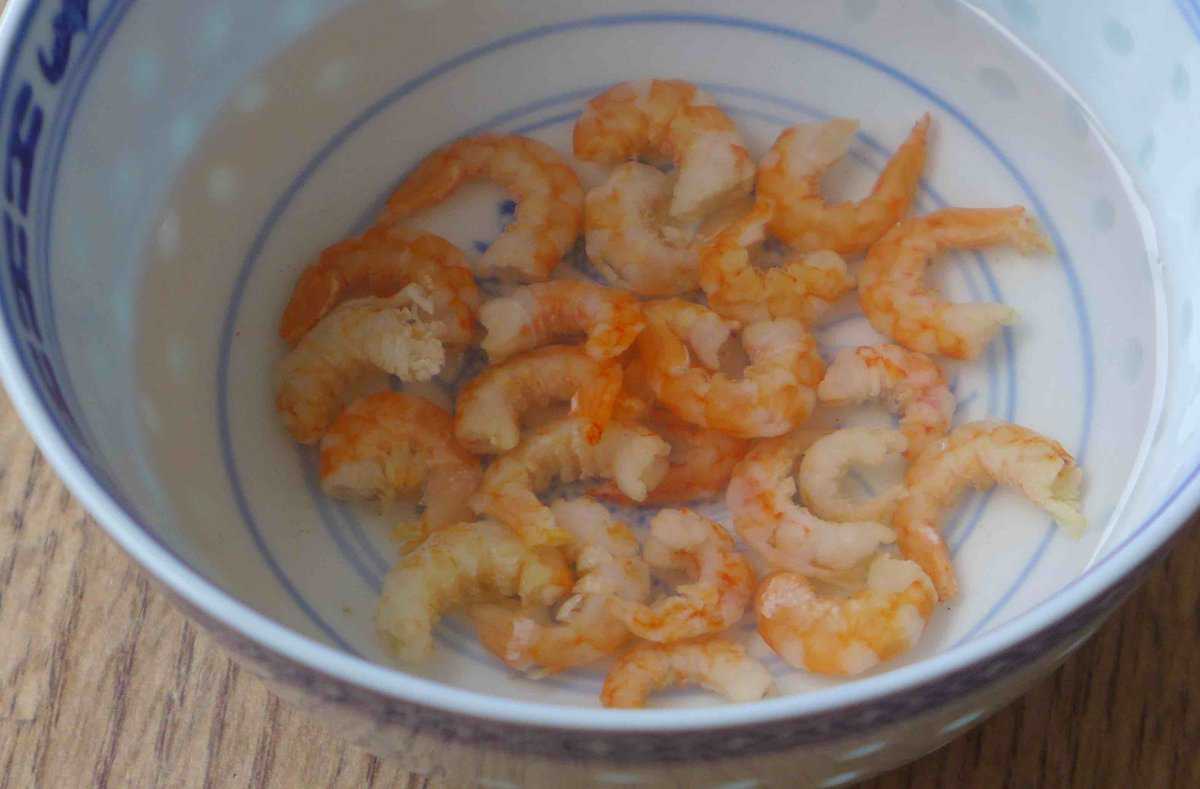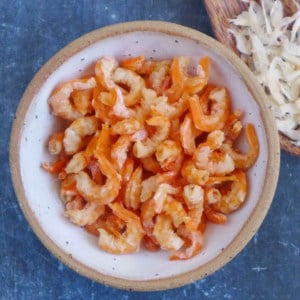A secret ingredient to rich umami taste, dried shrimp contributes to many delicious dishes. Here’s a how-to guide covering everything you need to know about it.
Dried shrimp make for a tasty and nutritious snack or ingredient to liven up recipes. Their concentrated umami flavor packs a flavorful punch in dishes like fried rice, pasta, soups, and more. Plus, drying shrimp at home is easy and lets you control ingredients.
Follow this simple step-by-step guide to learn how to dry shrimp successfully.
Overview of Drying Shrimp
Drying, also known as dehydrating, removes moisture from shrimp to preserve them and intensify their flavor. The drying process:
- Prevents spoilage by inhibiting bacterial growth
- Extends the shelf life by months
- Allows for storage without refrigeration
- Concentrates natural flavors as moisture evaporates
- Creates a chewy, crunchy texture
Dried shrimp have a longer shelf life than fresh and take up less storage space. Their intense savory flavor makes them a umami bomb for cooking.
Both raw and cooked shrimp can be dried with excellent results. Raw shrimp dry faster but need adequate drying time to reduce food safety risks. Cooked shrimp take longer to fully dehydrate but don’t carry the same foodborne illness concerns.
Benefits of Drying Your Own Shrimp
Drying shrimp at home has many advantages over buying pre-dried:
Control ingredients Avoid additives like MSG, salt, and preservatives
Customize flavor: Add your own herbs, spices, chili, citrus, etc.
Know your source: Choose sustainable, high-quality raw shrimp.
Save money DIY is cheaper than specialty dried shrimp
Reduce waste: Use shrimp heads/shells to make stock.
Create specialty varieties: Make unique seasoned, smoked, or spiced shrimp.
Enjoy superior texture: Home-dried retains better chew and crunch.
Drying your own allows endless opportunities for customization to suit your taste and diet.
What You Need to Get Started
Drying shrimp requires only a few basic supplies:
- Raw or cooked unpeeled shrimp
- Drying rack or food dehydrator
- Shellfish seasoning (optional)
- Cutting board and knife
- Container for storage
And that’s it! With just those simple items, you’re ready to make your own delicious dried shrimp.
Step 1 – Purchase Shrimp
Select fresh raw shrimp as your starting ingredient. Look for
- Wild-caught or sustainably farmed
- Shell on to protect meat during drying
- Plain, unseasoned
- Raw or cooked
Some suitable varieties include:
- Wild white shrimp
- Gulf shrimp
- Spot prawns
- Rock shrimp
Buy extra shells/heads to make shrimp stock later. Avoid pre-peeled shrimp which spoil quicker.
Step 2 – Prep the Shrimp
Rinse the shrimp under cold water. If drying raw, devein by slicing along the back and removing the digestive tract.
For cooked, boil or steam shrimp for 2-3 minutes until just opaque and plump.
Leave shells on for both raw and cooked to protect the meat while drying.
Tip: Reserve shells, heads, and tails to simmer into shrimp stock.
Step 3 – Season (Optional)
Adding seasoning provides extra flavor. Some options:
- Old Bay, cajun, or seafood seasoning blends
- Lemon pepper, smoked paprika, or chili powder
- Onion/garlic powder, dill, oregano, thyme
- Soy sauce, sesame oil, ginger, and brown sugar
Apply dry rubs liberally over both sides of whole shrimp. Marinate peeled shrimp in wet seasoning for 30 minutes before drying.
Step 4 – Arrange on Racks
Spread shrimp in a single layer on drying racks without overcrowding. Options:
Oven racks: Place racks directly on oven racks spaced apart.
Mesh racks: Set racks on baking sheets lined with parchment paper.
Food dehydrator: Load shrimp on dehydrator trays without overlapping.
Don’t pile shrimp or let them touch to allow air circulation for even drying.
Step 5 – Dehydrate Shrimp
Raw shrimp require more time to fully dry and reduce foodborne illness risks. Guidelines:
Raw: 200°F oven for 8-12 hours
Cooked: 150°F oven for 4-6 hours
Check frequently and rotate racks to promote even drying. Shrimp should be brittle and crunchy when fully dehydrated.
For food dehydrators, follow manufacturer guidelines for time and temperature based on shrimp type.
Tip: Placing a wooden spoon in the oven door prevents it from closing completely so moisture escapes.
Step 6 – Cool and Storage
Once dried, let the shrimp cool completely before storing or they will sweat moisture in the container.
Transfer dried shrimp to an airtight container. Glass jars, vacuum seal bags, or freezer bags all work well.
Store in a cool, dark place. Properly dried shrimp will keep for several months. Refrigerate for longer term storage.
Step 7 – Use in Recipes
Rehydrate dried shrimp before use by soaking in warm water for 20-30 minutes to soften them up.
Then utilize them in your favorite dishes to add concentrated umami flavor and delightful crunch:
- Fried rice or pasta
- Soups, stews, and chilis
- Shrimp salad or ceviche
- Topping for pizza, nachos, tacos
- Shrimp stock from shells
Or enjoy their intense sweet-briny flavor as a snack anytime!
Tips for Successful Shrimp Drying
Follow these tips and tricks for flawlessly dried shrimp every time:
-
Dry unpeeled shrimp to protect the delicate meat.
-
Arrange in a single layer without overlapping or piling.
-
Use lower temps for longer time to fully dehydrate without cooking.
-
Rotate racks and check shrimp frequently for even drying.
-
Cooked shrimp dry faster than raw but have less concentrated flavor.
-
Add seasonings before drying to infuse spices into the meat.
-
Let cool completely before storage to prevent sweating.
-
Store in airtight containers in a cool, dark place.
-
Soak in warm water before use to rehydrate.
Drying Different Types of Shrimp
You can dry any fresh shrimp variety using this method. Just follow these general guidelines:
Smaller shrimp: Tiger, rock, bay shrimp – 2-4 hours
Medium shrimp: White, brown, pink – 5-7 hours
Jumbo shrimp: Prawns, lobster, spots – 7-9 hours
Raw shrimp: Add 2+ hours to each
The larger the shrimp, the more time needed to fully dehydrate throughout the thickness. Raw also requires additional drying time compared to pre-cooked.
Getting Creative with Dried Shrimp
Once you master the basic drying technique, get creative with these fun variations:
-
Smoked shrimp – Add smoky flavor before or after drying
-
Seasoned shrimp – Use spicy rubs, herbs, citrus zest, etc.
-
Whole dried shrimp – Dry shell on, heads and all
-
Shrimp chips – Fry paper-thin slices of dried shrimp
-
Shrimp powder – Grind fully dried shrimp into seasoning powder
-
Shrimp jerky – Use a marinade before drying into chewy strips
-
Chili shrimp – Rehydrate in chili oil and red pepper flakes
The possibilities are endless! Make dried shrimp truly your own with unique flavors.
Making the Most of Your Dried Shrimp
To get the most value from your batch of dried shrimp:
- Save unused shells/heads to make shrimp stock
- Store dried shrimp properly to maximize shelf life
- Rehydrate before use for the best texture and flavor
- Use in a multitude of dishes, from soups to stir fries
- Swap dried shrimp for pricey alternatives like anchovies
- Grind a portion into shrimp powder for seasoning
- Package in small portions for easy use over time
With proper storage, dried shrimp will keep for months, providing a handy umami-rich ingredient whenever you need it. Follow these best practices and enjoy your hand-crafted dried shrimp for their full duration!

What is dried shrimp
Essentially, dried shrimp are sun-dried or baked (after being boiled) shrimp that has been completely or partially dehydrated. There is no dish that is made without them, but they are an important part of many classics that change how they taste.
To me, it is like an “unsung hero” in dishes. Even though its small size (often finely chopped) makes it easy to miss, the flavor it adds is rarely forgotten.
Like popular Asian ingredients like fish sauce or shrimp paste, dried shrimp gives food a unique umami (Xiān Wèi/鲻味) taste, which means savoriness and is one of the five basic tastes. It goes well with any ingredient, but I think it really shines in dishes that are mostly made with plant-based ingredients, like g. Tofu and Vegetable Soup, Turnip Cake, and more.
There are two types of dried shrimp used in Chinese cuisine: regular ones and papery ones.
Regular dried shrimp

The most common one is known as Xiā Mǐ/虾米, Hǎi Mǐ/海米, or Gān Xiā Rén/干虾仁. They’re orange-looking, firm to the touch, and have their heads and most of the skin removed.
They come in different sizes, ranging from ⅓ to 1 inch (1-2½ cm). The bigger ones are usually more pricey, but I find smaller ones are equally good in flavor.
Papery dried shrimp

This type is known as Xiā Pí/虾皮, which means “shrimp skin” literally. They are tiny, beige-colored shrimp that have heads and tails intact. They don’t look as dry or firm as the regular version and have a crispy texture.
The taste of papery dried shrimp is milder than regular dried shrimp. It has a sweet undertone that I really like. They can be used directly without soaking.
You can cook dried shrimp in a lot of different ways, like in soups, broths, dumpling fillings, stir-fries, fried rice, fried noodles, braised or steamed dishes, and more.
Their flavor goes a long way, but they are only needed in small amounts most of the time. Here are a few general rules to follow when using them:
- If you are using regular ones, you will need to rehydrate them first (read more in the next section).
- Papery ones can be used directly without soaking.
- They can be chopped up, ground, or added whole to dishes to give them more texture.
- They can taste better if you fry them in a little oil.
The following recipes on the blog are great examples of using this flavorful ingredient:
Regular dried shrimp needs to be rehydrated before cooking. This process helps to release their aroma. Also, you’ll find it much easier to chop the softened ones into small pieces.

- Put as many dried shrimp as the recipe says to a small bowl. Then, add enough hot water to cover the shrimp completely. Soak them for about 10 minutes, or until they get soft and plump.
- If the shrimp are very small, you can use them whole, but if they’re bigger, you can cut them up.
Tip: Do not discard the water in which the dried shrimp has been soaked. It’s full of flavor and thus can be added to the dish you’re cooking. This is similar to how you’d use the soaking water for shiitake mushrooms.
Dried shrimp can be found in Chinese/Asian grocery stores. It’s usually in plastic packaging and kept in either the chilled or frozen food sections. Some online shopping platforms, such as Amazon, also have it in stock.
Good quality ones have uniform size and color. The regular kind should be bright orange, and the papery kind should have its whole body (head and tail not broken).

Once you open the package, put the dried shrimp in a container that won’t let air in. Keep it in the fridge to keep it fresh. Use it up in two months.
If you have bought a large amount, divide them into small portions and freeze in separate airtight bags. Consume before its expiry date.
If you find it hard to source dried shrimp, here are a few substitute options:
- Dried scallops (Gān Bèi/干贝)
- Shrimp paste (Xiā Jiàng/虾酱)
- Fish sauce (Yú Lù/鱼露)
No matter which one you use, make sure you limit its quantity. All of them have a rather concentrated flavor and are high in sodium.

How to use Dried Shrimp
How to cook dried shrimp to perfection?
Here are some tips on how to cook dried shrimp to perfection. When using dried shrimp in your recipes, it’s important to rehydrate them properly before cooking. Start by rinsing the dried shrimp in cold water to remove any excess salt or debris. Then, soak the shrimp in warm water for about 15-20 minutes, or until they become plump and tender.
Can I eat raw shrimp?
Eating raw shrimp is not recommended. Raw shrimp can contain bacteria that can cause food poisoning. It is also a good source of purines, which can trigger gout attacks. If you want to eat shrimp, cook it thoroughly to reduce the risk of food poisoning and to help prevent gout attacks. Cook shrimp until it is opaque and pink to ensure that it is safe to eat.
How do you keep shrimp from drying out?
In the evening when the sun is going down, cover the shrimp with cloth or burlap and bring inside a shed or building. Generally night air has a tendency to bring in the moisture and moisture is the enemy of drying/dried shrimp and the friend of bacteria. Repeat for three days.
How do you soften dried shrimp?
Also, you’ll find it much easier to chop the softened ones into small pieces. In a small bowl, add the amount of dried shrimp that a recipe calls for, then pour in hot water enough to fully submerge the shrimp. Leave to soak for 10 minutes or so until they become plump and softer.
